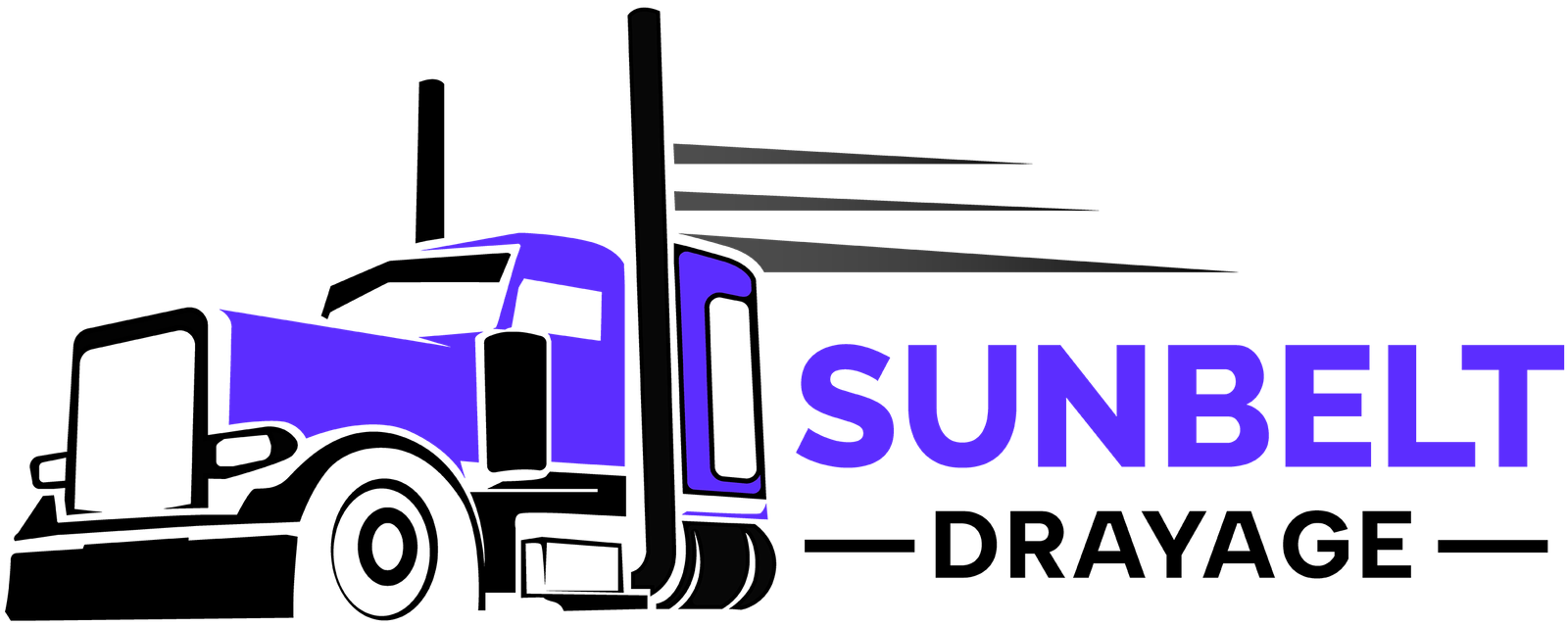What is drayage?
Drayage is the short-haul movement of ocean containers between the marine terminal and the next point in your supply chain—your warehouse, cross-dock, rail ramp, or yard. Think of it as the crucial “first/last mile” that turns a ship arrival into freight you can actually receive.
Common drayage flavors you’ll hear about:
-
Port-to-door: Pull from terminal → deliver to your facility.
-
Pre-pull: Pull early and store at a yard to avoid terminal fees or to match your dock schedule.
-
Drop & hook: Drop the loaded container, pick up an empty.
-
Live unload: Driver waits while your team unloads (usually 2 hours free, then detention).
-
Street-turn: Reuse the empty for an export booking to save time and miles (subject to line rules).
How a container move typically flows in Houston
-
Release & availability – Your freight forwarder/steamship line shows the container as “available,” and the ocean freight, holds, and customs are cleared.
-
Appointment & dispatch – Your drayage partner books the terminal appointment and assigns a driver and chassis.
-
Terminal pick-up – Driver enters Bayport or Barbours Cut with the right booking, out-gate with the loaded box.
-
Delivery – Live unload (driver waits) or drop (we leave the container for later unload).
-
Empty return or street-turn – Return per line’s instructions, or reuse as an export if approved.
The fees most importers ask about (plain English)
-
Demurrage: Charged by the terminal when your container sits there after your free days. Avoid by pre-pulling or clearing holds early.
-
Per diem (a.k.a. detention by line): Charged by the steamship line if you keep the container too long after it leaves the terminal. Avoid by planning unload and return windows.
-
Chassis: Daily/usage cost for the trailer that carries the container. Specialized chassis (e.g., tri-axle or reefer) cost more.
-
Driver waiting time (detention): If live-unload exceeds the included time (often 2 hours), detention applies.
-
Accessorials: Things like split-pickup/return, pre-pull storage, lift/flip fees, overweight permits, etc.
Quick wins to avoid extras
-
Clear customs and holds as early as possible.
-
Send full delivery instructions (address, hours, contact, dock appt) when you book.
-
If dock time is uncertain, request a pre-pull to a local yard.
-
Plan the empty return instructions before delivery to minimize per diem.
Documentation checklist for a smooth pull
-
Steamship line release (no holds)
-
Container number(s) and booking/BOL
-
Delivery Order (if required)
-
Delivery address, hours, and contact
-
Special equipment notes (reefer set-point, hazardous, overweight)
-
For exports: booking number, cutoff times, VGM, and any pier pass/appointment details
What affects a drayage quote (and how to optimize it)
-
Terminal & distance – Miles from Bayport/Barbours Cut to your facility. Consolidate deliveries when possible.
-
Container type – 20/40/45, reefer, hazmat, overweight needs.
-
Free time & timing – Last free day rescue is pricier than a flexible pickup.
-
Chassis type & availability – Standard vs. tri-axle/reefer gen-set.
-
Live vs. drop – Live is cheaper if you unload fast; drop is safer if your dock is tight.
-
Volume & lanes – Regular lanes can be priced more efficiently than one-offs.
Services Sunbelt Drayage provides
-
Port-to-door drayage across Greater Houston and regional lanes
-
Last Free Day rescue & pre-pulls with yard storage options
-
Drop & hook or live unload based on your operation
-
Street-turn coordination (subject to line approval)
-
Overweight solutions (permits and equipment where applicable)
-
Appointment management & proactive updates so you’re never guessing
Need something specific? Tell us your container numbers, delivery window, and any special requirements—we’ll map the most cost-effective plan.
7 practical tips to keep your boxes moving
-
Book early once you have ETA and clearances.
-
Send complete delivery info (hours, dock, forklift availability).
-
Use pre-pull + yard storage when dock time is uncertain.
-
Plan for empty return before delivery (line, location, cutoff).
-
Schedule live unloads in the morning to reduce traffic delays.
-
Bundle containers to the same destination when possible.
-
Watch free-time clocks (terminal and line) like a hawk.
FAQs
What’s the difference between demurrage and per diem?
Demurrage is a terminal storage fee for containers that overstay at the port. Per diem (detention) is a steamship line daily fee when you keep the container too long after it leaves the terminal.
How many free days do I have?
It varies by terminal and carrier. Your forwarder or line notice will state the exact window. Ask us if you’re unsure—we’ll confirm before we pull.
Live unload or drop?
If you can unload in ~2 hours, live is usually cheaper. If your dock is tight or staffing uncertain, a drop avoids detention risk.
Can you pre-pull and hold my container?
Yes. We can pre-pull before last free day and stage the box at our yard to align with your dock and avoid demurrage.
Do you arrange street-turns for exports?
Often, yes—subject to carrier rules and compatibility. It can save time and empty miles.
Ready to move a container?
Tell us your container number(s), delivery address, and timing—and we’ll send a firm plan with pricing.
Call/Email CTA: Add your phone/email or link to your quote form here.
